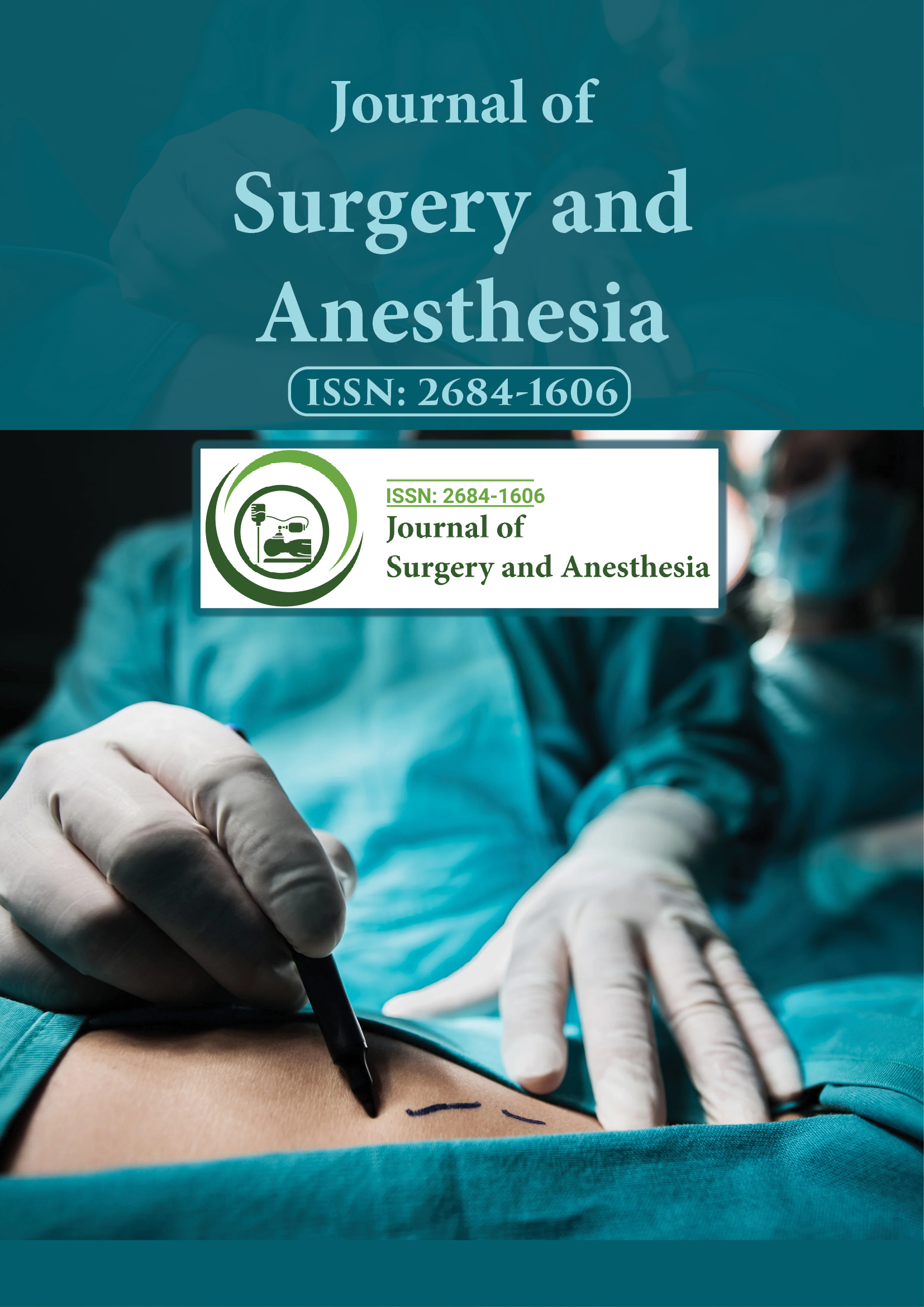Indexed In
- Google Scholar
Useful Links
Share This Page
Journal Flyer

Open Access Journals
- Agri and Aquaculture
- Biochemistry
- Bioinformatics & Systems Biology
- Business & Management
- Chemistry
- Clinical Sciences
- Engineering
- Food & Nutrition
- General Science
- Genetics & Molecular Biology
- Immunology & Microbiology
- Medical Sciences
- Neuroscience & Psychology
- Nursing & Health Care
- Pharmaceutical Sciences
Commentary - (2023) Volume 7, Issue 1
Establishing a New Instrument to Assess the Complexity of Laparoscopic Bariatric Surgery
Jackson Samakar*Received: 22-Feb-2023, Manuscript No. JSA-23-19651; Editor assigned: 24-Feb-2023, Pre QC No. JSA-23-19651(PQ); Reviewed: 10-Mar-2023, QC No. JSA-23-19651; Revised: 17-Mar-2023, Manuscript No. JSA-23-19651(R); Published: 27-Mar-2023, DOI: 10.35248/2684-1606.23.7.197
Description
Bariatric surgery reduces total mortality in obese people by 30%. Roux-en-Y Gastric Bypass (RYGB), Sleeve Gastrectomy (SG), and One Anastomosis Gastric Bypass (OAGB) are the three most popular types of bariatric surgery. Bariatric surgery has several benefits for the patient, which is already well established. On the other hand, the drawbacks for the surgeon and the surgical team are gradually coming to light more and more. A team of specialized doctors, including doctors, nutritionists, and psychologists, should assess obese people who are candidates for surgery before the procedure. Before surgery, the patient must undergo a number of clinical examinations in order to lower the risk of complications during and after operation. Patients with a BMI of 35 kg/m2 to 40 kg/m2 who have obesity-related diseases like diabetes or sleep apnea should be offered obesity surgery, according to the National Institute of Clinical Excellence (NICE) and the National Institute of Health (NIH), as well as those with a BMI of 40 or higher regardless of comorbidities. The suggestions for sending candidates for bariatric surgery are provided in the guidelines, but there is very little advice to assist patients with particular disorders. Prior to surgery, the surgeon should analyse the evidence-based pros and cons of bariatric surgery. Body Mass Index (BMI), the existence of co-morbidities, and a history of prior weight loss are only a few of the criteria used to choose patients for bariatric surgery. Before surgery, a patient is assessed to see if they are a candidate for surgery. Each patient's assessment is unique to them. According to some sources, the surgical team needs to conduct a number of additional, more thorough examinations of the patient's condition notwithstanding the aforementioned assessments. Treatment failure following obesity surgery and some postoperative problems are caused by a team's limited understanding of the patient's situation. The surgical evaluation team should, however, be given accurate and realistic information about each patient's health in order to help them choose the best course of action. Preoperative evaluations must include these unique evaluations of each patient. Lack of a checklist for assessing the patient and his preoperative state is one of the most fundamental shortcomings in surgical operations for the surgeon. As a result, surgeons choose a procedure type for patients based on an empirical methodology. Based on the patient's clinical phenotype, treatment objective, and potential dangers, this decision may be made. Depending on the patient, surgery may be difficult or even impossible. For instance, it may be difficult or impossible to perform a laparoscopic procedure on a patient who has a large abdominal hernia, significant intraabdominal adhesions, a large liver, a high BMI with central obesity, or physiological intolerance. Even if a specialist team is required to assess the patient prior to surgery, the tools and setup of the operating theatre can still have an impact on how the procedure goes. The surgical procedure is impacted by the hospital setting, patient attire, beds, and chairs, particularly for those who have significant obesity. Based on conversations with experts in the field of obesity surgery, we discovered that the operating room staff as well as the surgeon and surgical team will require a tool to evaluate the complexity of the surgical procedure. They can set up the right facilities and equipment prior to the procedure so that the surgeon can choose the best procedure type, timing (for instance, performing difficult or complicated surgeries first thing in the morning and simpler procedures later), number of surgeons or operating room personnel, and equipment based on the patient's conditions, minimizing complications both during and after the procedure. The goal of this study was to create a new instrument for assessing the difficulty of laparoscopic bariatric surgery so that patients might be prepared before to the procedure by identifying potential issues and challenges.
Citation: Samakar J (2023) Establishing a New Instrument to Assess the Complexity of Laparoscopic Bariatric Surgery J Surg Anesth.7:197.
Copyright: © 2023 Samakar J. This is an open-access article distributed under the terms of the Creative Commons Attribution License, which permits unrestricted use, distribution, and reproduction in any medium, provided the original author and source are credited.
